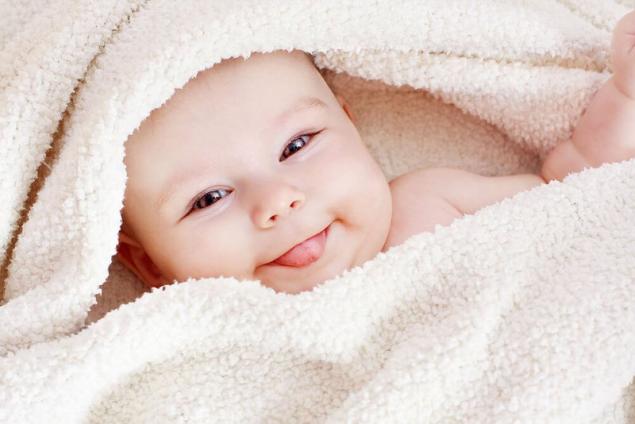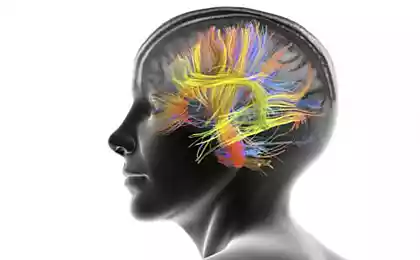496
12 facts about the brain development of the child, which every mother will be useful to know
I'd really like that 5 years ago someone shared with me these facts when I was pregnant with my first child, and maybe then I would have had a different view on the development of Stasi in its first year. And in General – otherwise would look at the development of the child – that is to say, from a scientific point of view. And early development, then it would seem not a race and competing with forum moms "who are more grains gave the child to pour and how many cards shows a day," and certainly not "one child said first word at 7 months," and it would not seem unreasonable system, the program of development that a child needs now and what it is he needs in life.

No – I had ceased to pay much attention to the child in its first year of life because the facts presented below just confirm that it is not enough to be "just a mom that exists just next to the baby 24/7" and should not be neglected this period in my life, relying on "Oh, he still does not yet understand or perceive" (it's not!), but I would otherwise been distributed during these 24/7 – that's for sure.
I think the basics of child brain development, we should share with future moms on the courses of pregnancy, and doing so in the UK, for example. But if you, like me, have not had the opportunity to take courses for pregnant Baby Foundations in the UK, it can be very helpful to read! So, what happens to the brain of the child from the moment of birth until the first Birthday? 1. For the first year of life a child's brain is increased by 2 times and weighs about 1 kg. the mass of the adult human brain is slightly over 2 kg. 2. The mass of the brain increases due to the formation and strengthening of neural connections. Neural communication the synapse is formed at the time when the child gains experience. Any experience.

3. Up to 700 synapses per second are formed in the first years of a child's life. However, in order for neural communication remained (and brain mass by this one neural connection), it is important that the child has gone through this experience several times. 4. Use it or lose it – use it or lose it! In the brain of the newborn 150-200 billion (!!!) neurons in the adult human brain is 2 times smaller. Neurons either are concatenated to form neural connections and strengthening them, or die, and in the hands of parents and people influencing the development of this kid, the fate of most of the nerve cells of the baby. 5. In the first 12 months of life, the most active neural connections can be formed in areas of the brain that are responsible for physical development, speech and emotional development. In contrast, a region of the brain responsible for logical reasoning, go through a stage of "doraswamy", so in the first year is almost inactive. 6. At birth, iron amygdala (Amygdala – seat of emotions) is more developed than the frontal lobes, which deal with reasoning. Babies are more inclined to show their emotions, not control them. This explains why children often react to situations with tears. It also explains why it is so important to develop the emotional sphere of the child and his senses, and not to engage in premature development of the intellect. 7. In the first 6 months of life the formation of new neural connections is the most active. To a greater extent it concerns farmerbeneficiaries, primary skills early socialization and sense of smell. 8. The most strong neural connections – are connections that occur in both hemispheres. Crawling – the most efficient way to synchronize both hemispheres. Later it can compare to playing musical instruments and swimming. 9. The cerebellum of the newborn the average weight 21-23 g.. a Marked increase in the cerebellum is celebrated between the 5th and 11th months of life, when the child learns to sit and walk. The weight of the cerebellum of a newborn is about 20 g, in 3 months it doubled in 5 months increased by 3 times, at the end of the 9th month — 4 times. to one year 84-94 g, 15 years – 150 g. the Cerebellum is responsible for coordination, however, recent studies have shown that the cerebellum determines the speed of thought. Certainly, in your environment there are people who are lightning fast to draw conclusions and ahadiat decisions, and there is a “slowpoke”?

10. During exercise in the hippocampus formation of new nerve cells. Studies have shown that during exercise accelerate the chemical reaction and the hippocampus and in the anterior part of the brain responsible for the acquisition of cognitive skills. 11. Broca's area and Wernicke's area – two areas of the brain responsible for language development. But despite the fact that Broca's area responsible for speech, shows activity only closer to 12 months (and before that should not be taken "mamamamama" as the first word) for the reproduction of speech can and should be influenced even earlier – from birth, through working with the Wernicke area, responsible for speech perception. How are these zones and what best develops a child's speech BEFORE his first word. Also interesting : Lullabies for children: why is it important to sing kids songs As the birth order of children affects their future destiny 12. The multi-sensory experience – much more important than monostary. So showing the cards at home one-on-one is much less effective than a live pet dog, to listen to the song in the company of peers and to try eggplant! published Author: Natasha Alyokhina P. S. And remember, only by changing their consumption — together we change the world! ©
Source: momcanmore.blogspot.ru/2015/08/12-faktov-o-razvitii-golovnogo-mozga-rebenka-s-rozhdeniya-do-12-mesyacev.html

No – I had ceased to pay much attention to the child in its first year of life because the facts presented below just confirm that it is not enough to be "just a mom that exists just next to the baby 24/7" and should not be neglected this period in my life, relying on "Oh, he still does not yet understand or perceive" (it's not!), but I would otherwise been distributed during these 24/7 – that's for sure.
I think the basics of child brain development, we should share with future moms on the courses of pregnancy, and doing so in the UK, for example. But if you, like me, have not had the opportunity to take courses for pregnant Baby Foundations in the UK, it can be very helpful to read! So, what happens to the brain of the child from the moment of birth until the first Birthday? 1. For the first year of life a child's brain is increased by 2 times and weighs about 1 kg. the mass of the adult human brain is slightly over 2 kg. 2. The mass of the brain increases due to the formation and strengthening of neural connections. Neural communication the synapse is formed at the time when the child gains experience. Any experience.

3. Up to 700 synapses per second are formed in the first years of a child's life. However, in order for neural communication remained (and brain mass by this one neural connection), it is important that the child has gone through this experience several times. 4. Use it or lose it – use it or lose it! In the brain of the newborn 150-200 billion (!!!) neurons in the adult human brain is 2 times smaller. Neurons either are concatenated to form neural connections and strengthening them, or die, and in the hands of parents and people influencing the development of this kid, the fate of most of the nerve cells of the baby. 5. In the first 12 months of life, the most active neural connections can be formed in areas of the brain that are responsible for physical development, speech and emotional development. In contrast, a region of the brain responsible for logical reasoning, go through a stage of "doraswamy", so in the first year is almost inactive. 6. At birth, iron amygdala (Amygdala – seat of emotions) is more developed than the frontal lobes, which deal with reasoning. Babies are more inclined to show their emotions, not control them. This explains why children often react to situations with tears. It also explains why it is so important to develop the emotional sphere of the child and his senses, and not to engage in premature development of the intellect. 7. In the first 6 months of life the formation of new neural connections is the most active. To a greater extent it concerns farmerbeneficiaries, primary skills early socialization and sense of smell. 8. The most strong neural connections – are connections that occur in both hemispheres. Crawling – the most efficient way to synchronize both hemispheres. Later it can compare to playing musical instruments and swimming. 9. The cerebellum of the newborn the average weight 21-23 g.. a Marked increase in the cerebellum is celebrated between the 5th and 11th months of life, when the child learns to sit and walk. The weight of the cerebellum of a newborn is about 20 g, in 3 months it doubled in 5 months increased by 3 times, at the end of the 9th month — 4 times. to one year 84-94 g, 15 years – 150 g. the Cerebellum is responsible for coordination, however, recent studies have shown that the cerebellum determines the speed of thought. Certainly, in your environment there are people who are lightning fast to draw conclusions and ahadiat decisions, and there is a “slowpoke”?

10. During exercise in the hippocampus formation of new nerve cells. Studies have shown that during exercise accelerate the chemical reaction and the hippocampus and in the anterior part of the brain responsible for the acquisition of cognitive skills. 11. Broca's area and Wernicke's area – two areas of the brain responsible for language development. But despite the fact that Broca's area responsible for speech, shows activity only closer to 12 months (and before that should not be taken "mamamamama" as the first word) for the reproduction of speech can and should be influenced even earlier – from birth, through working with the Wernicke area, responsible for speech perception. How are these zones and what best develops a child's speech BEFORE his first word. Also interesting : Lullabies for children: why is it important to sing kids songs As the birth order of children affects their future destiny 12. The multi-sensory experience – much more important than monostary. So showing the cards at home one-on-one is much less effective than a live pet dog, to listen to the song in the company of peers and to try eggplant! published Author: Natasha Alyokhina P. S. And remember, only by changing their consumption — together we change the world! ©
Source: momcanmore.blogspot.ru/2015/08/12-faktov-o-razvitii-golovnogo-mozga-rebenka-s-rozhdeniya-do-12-mesyacev.html
This decoction will cause the pressure to normal
BMW is developing the infrastructure for electric vehicles
























